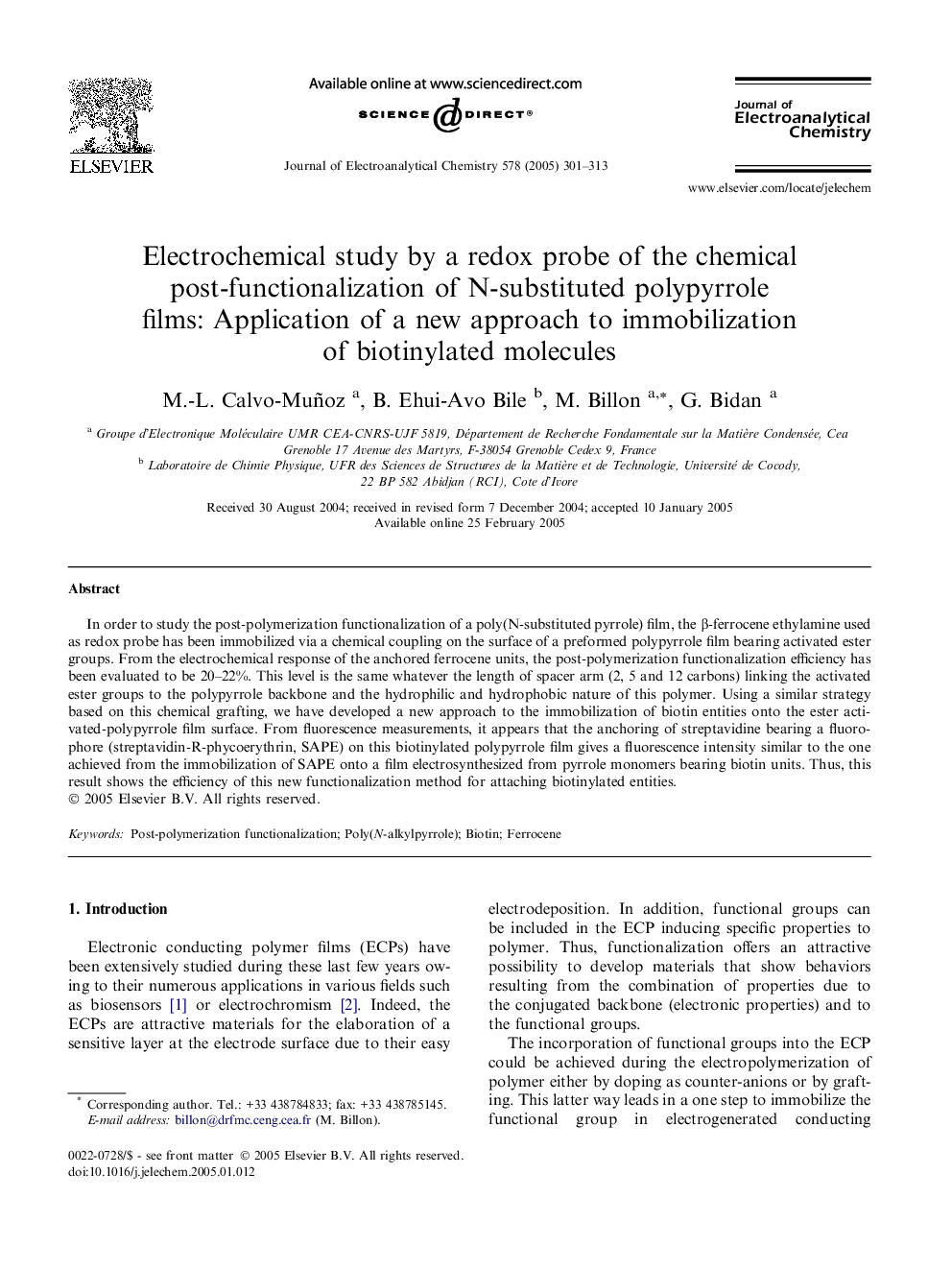| Article ID | Journal | Published Year | Pages | File Type |
|---|---|---|---|---|
| 10276151 | Journal of Electroanalytical Chemistry | 2005 | 13 Pages |
Abstract
In order to study the post-polymerization functionalization of a poly(N-substituted pyrrole) film, the β-ferrocene ethylamine used as redox probe has been immobilized via a chemical coupling on the surface of a preformed polypyrrole film bearing activated ester groups. From the electrochemical response of the anchored ferrocene units, the post-polymerization functionalization efficiency has been evaluated to be 20-22%. This level is the same whatever the length of spacer arm (2, 5 and 12 carbons) linking the activated ester groups to the polypyrrole backbone and the hydrophilic and hydrophobic nature of this polymer. Using a similar strategy based on this chemical grafting, we have developed a new approach to the immobilization of biotin entities onto the ester activated-polypyrrole film surface. From fluorescence measurements, it appears that the anchoring of streptavidine bearing a fluorophore (streptavidin-R-phycoerythrin, SAPE) on this biotinylated polypyrrole film gives a fluorescence intensity similar to the one achieved from the immobilization of SAPE onto a film electrosynthesized from pyrrole monomers bearing biotin units. Thus, this result shows the efficiency of this new functionalization method for attaching biotinylated entities.
Related Topics
Physical Sciences and Engineering
Chemical Engineering
Chemical Engineering (General)
Authors
M.-L. Calvo-Muñoz, B. Ehui-Avo Bile, M. Billon, G. Bidan,
